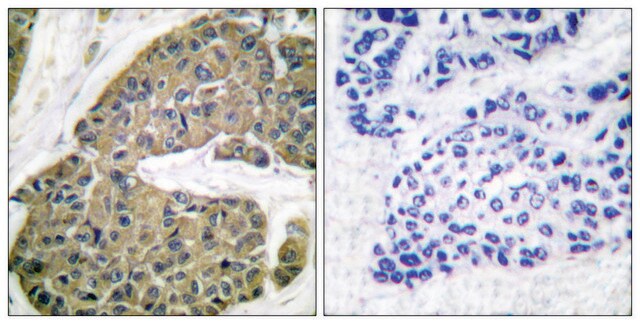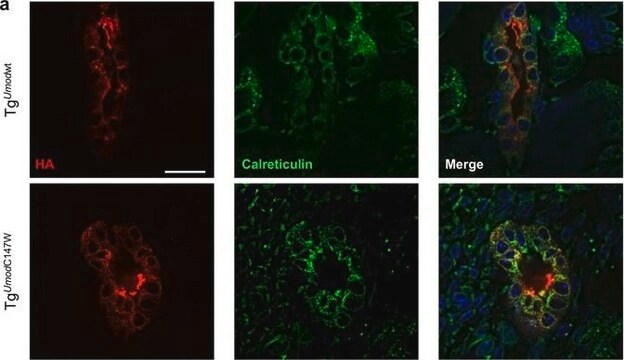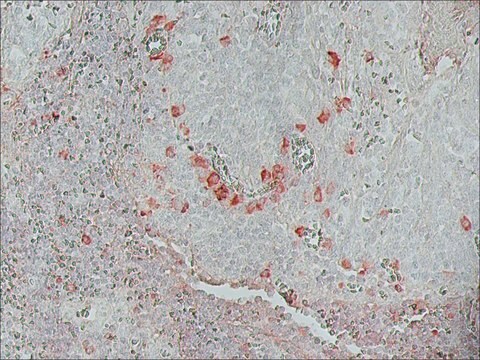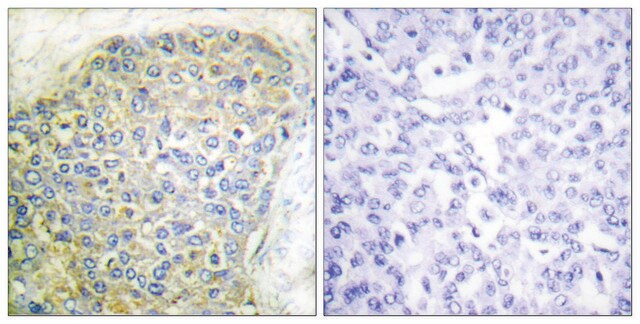AB9890
Anti-AGE (Advanced Glycation End-products) Antibody
serum, Chemicon®
Sign Into View Organizational & Contract Pricing
All Photos(1)
About This Item
UNSPSC Code:
12352203
eCl@ss:
32160702
NACRES:
NA.41
clone:
polyclonal
application:
ELISA
WB
WB
species reactivity:
human
technique(s):
ELISA: suitable
western blot: suitable
western blot: suitable
citations:
11
Recommended Products
biological source
goat
Quality Level
antibody form
serum
antibody product type
primary antibodies
clone
polyclonal
species reactivity
human
manufacturer/tradename
Chemicon®
technique(s)
ELISA: suitable
western blot: suitable
shipped in
wet ice
target post-translational modification
unmodified
Specificity
AGE (Advanced Glycation End-products)
Immunogen
Glycoaldehyde-modified protein.
Application
Anti-AGE (Advanced Glycation End-products) Antibody detects level of AGE (Advanced Glycated End-products) & has been published & validated for use in ELISA & WB.
Research Category
Neuroscience
Neuroscience
Research Sub Category
Neurodegenerative Diseases
Oxidative Stress
Neurodegenerative Diseases
Oxidative Stress
Western blot: ≥1:2,000 on AGE-modified proteins.
ELISA: ≥ 1:4,000 against Glycoaldehyde-modified BSA.
Optimal working dilutions must be determined by end user.
ELISA: ≥ 1:4,000 against Glycoaldehyde-modified BSA.
Optimal working dilutions must be determined by end user.
Physical form
Goat antiserum. Liquid with 0.1% SODIUM AZIDE
Serum
Storage and Stability
Maintain at -20°C in undiluted aliquots for up to 12 months after date of receipt. Avoid repeated freeze/thaw cycles.
Legal Information
CHEMICON is a registered trademark of Merck KGaA, Darmstadt, Germany
Disclaimer
Unless otherwise stated in our catalog or other company documentation accompanying the product(s), our products are intended for research use only and are not to be used for any other purpose, which includes but is not limited to, unauthorized commercial uses, in vitro diagnostic uses, ex vivo or in vivo therapeutic uses or any type of consumption or application to humans or animals.
Not finding the right product?
Try our Product Selector Tool.
Storage Class Code
12 - Non Combustible Liquids
WGK
WGK 1
Flash Point(F)
Not applicable
Flash Point(C)
Not applicable
Certificates of Analysis (COA)
Search for Certificates of Analysis (COA) by entering the products Lot/Batch Number. Lot and Batch Numbers can be found on a product’s label following the words ‘Lot’ or ‘Batch’.
Already Own This Product?
Find documentation for the products that you have recently purchased in the Document Library.
Vassilis L Tzounakas et al.
Frontiers in medicine, 5, 16-16 (2018-02-21)
Transfusion of fresh frozen plasma (FFP) helps in maintaining the coagulation parameters in patients with acquired multiple coagulation factor deficiencies and severe bleeding. However, along with coagulation factors and procoagulant extracellular vesicles (EVs), numerous bioactive and probably donor-related factors (metabolites
Analysis of AGE modified proteins and RAGE expression in HER2/neu negative invasive ductal carcinoma.
Arvind M Korwar,Hemangi S Bhonsle,Ashok D Chougale,Sachin S Kote,Kachru R Gawai et al.
Biochemical and biophysical research communications null
Shweta Kishor Sonawane et al.
Oncotarget, 12(11), 1083-1099 (2021-06-05)
Alzheimer's disease is a type of dementia denoted by progressive neuronal death due to the accumulation of proteinaceous aggregates of Tau. Post-translational modifications like hyperphosphorylation, truncation, glycation, etc. play a pivotal role in Tau pathogenesis. Glycation of Tau aids in
Ali S Alqahtani et al.
Saudi journal of biological sciences, 28(1), 813-824 (2021-01-12)
Current pre-clinical evidences of Centella focus on its pharmacological effects on normal wound healing but there are limited studies on the bioactivity of Centella in cellular dysfunction associated with diabetic wounds. Hence we planned to examine the potential of Centella
Hugo Vicente Miranda et al.
Brain : a journal of neurology, 140(5), 1399-1419 (2017-04-12)
α-Synuclein misfolding and aggregation is a hallmark in Parkinson's disease and in several other neurodegenerative diseases known as synucleinopathies. The toxic properties of α-synuclein are conserved from yeast to man, but the precise underpinnings of the cellular pathologies associated are
Our team of scientists has experience in all areas of research including Life Science, Material Science, Chemical Synthesis, Chromatography, Analytical and many others.
Contact Technical Service







